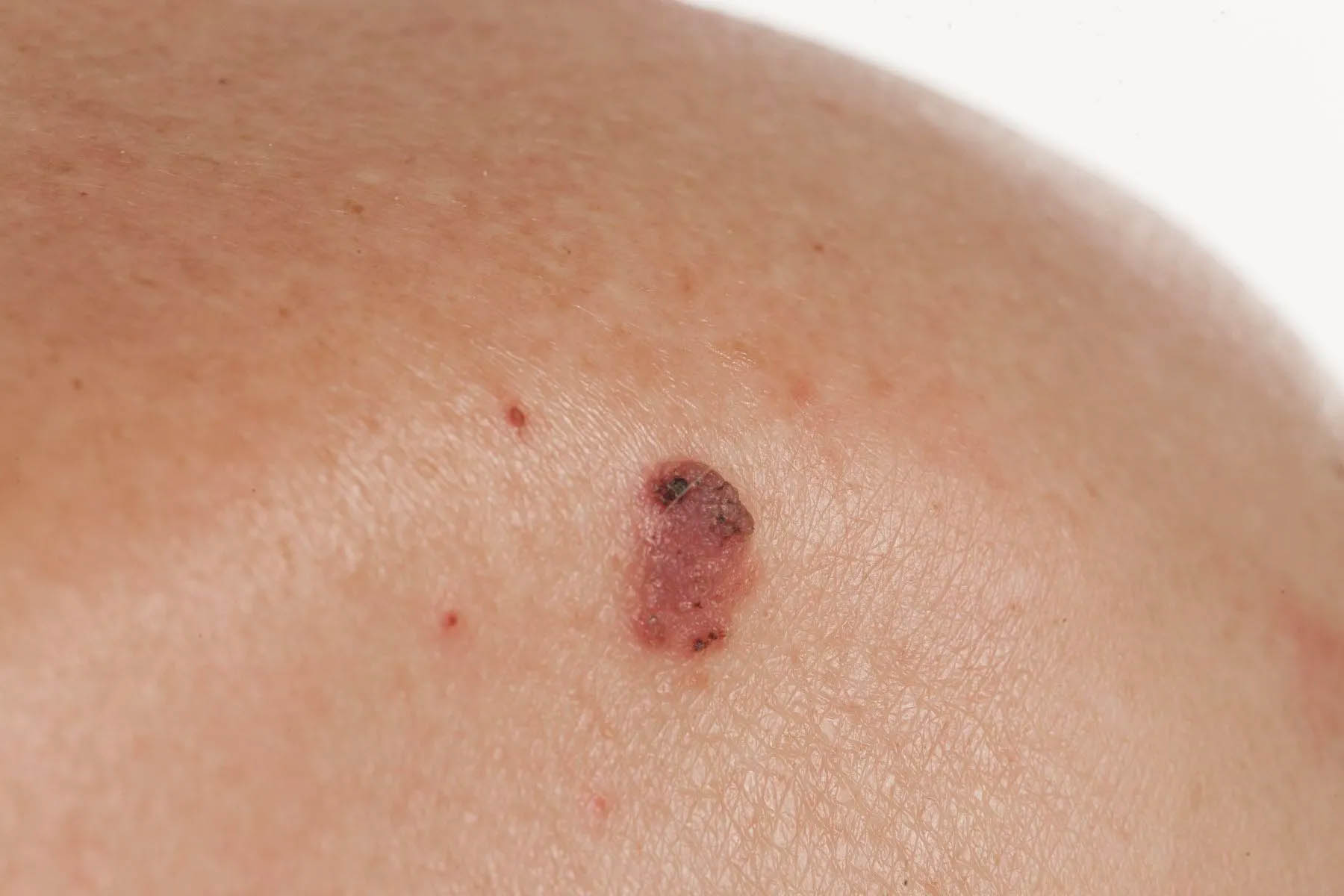Types of Skin Cancer
Explore the fundamental aspects of skin cancer listed below, including Actinic Keratoses, Basal Cell Cancer (BCC), Squamous Cell Cancer (SCC), and Melanoma.
Whether you need guidance for yourself or a loved one, our goal is to equip you with essential knowledge to navigate this complex topic. Remember, being informed is the primary defense against skin cancer.
Actinic Keratoses
While not a true skin cancer, these are scaly, red bumps that appear in sun exposed areas. About 10% of these will progress to Squamous Cell Cancer and therefore they should be treated with either liquid nitrogen, topical chemotherapy, or photodynamic light therapy (PDT).
Basal Cell Cancer (BCC)
This is the most common type of skin cancer, with over 700,000 cases a year. While this skin cancer rarely metastasizes (travels throughout the body), this tumor can be destructive and result in loss of eyes, ears, and large amounts of skin in cosmetically significant areas, if not treated adequately. Treatment of this tumor should be based on the subtype and the location. The following are the 5 basic subtypes:
- Superficial BCC
- Nodular BCC
- Micronodular BCC
- Basosquamous cell cancer
- Morpheaform BCC ( also called infiltrative or sclerosing)

Squamous Cell Cancer (SCC)
This is the second most common type of skin cancer. This tumor has a higher chance of metastasizing, especially if the cancer is on the lips or the ears. The 4 basic types of SCC are:
- Well Differentiated SCC
- Moderately well differentiated SCC
- Poorly differentiated SCC
- Spindle cell SCC
Once again, treatment should be based on the tumor type (histology) and the location.
Melanoma
All melanomas are malignant! The prognosis depends on the depth of the tumor (Breslow’s level). The average age of a patient with melanoma is only 38! The risk factors for developing a melanoma are:
- Family history of melanoma
- Personal history of melanoma
- History of sunburns
- Many moles and freckles
If you have a mole that has some of the following characteristics (ABCD’S), then it needs to be examined by a dermatologist.
A) Asymmetry
B) Border that is irregular
C) Color – Black, blue, gray, red, white, etc.
D) Diameter that is greater that the size of a pencil eraser
E) Evolving- a lesion that has changed its appearance
Treatment for melanoma is primarily surgical and requires that a margin of normal tissue be taken to give an adequate cure rate.


